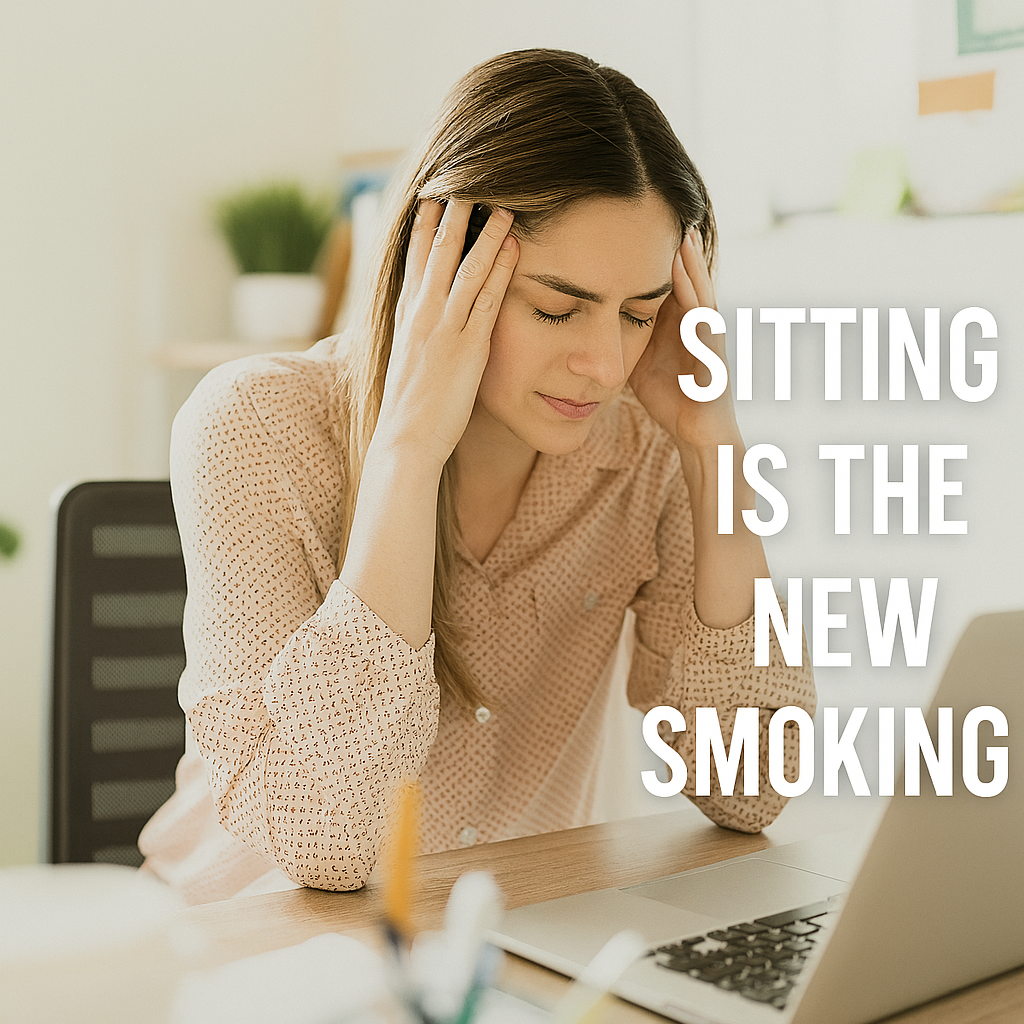Sitting is the New Smoking: Understanding the Risks of Prolonged Sedentary Behavior
In our fast-paced, screen-driven world, we are spending more time sitting than ever before. Whether we’re working at desks, commuting, or relaxing on the couch, hours of sitting are quietly affecting our health. The term "sitting is the new smoking" might sound dramatic, but the reality is that prolonged sedentary behavior comes with serious health risks.
Let’s take a closer look at the science behind the dangers of sitting and how you can take simple steps to protect your health.
The Hidden Dangers of Sitting: Why It Matters
Sitting and Increased Mortality Risk
Research has shown that sitting for long periods each day – without adequate physical activity – can increase the risk of premature death. In fact, a meta-analysis published in The Lancet (2016) found that sitting for 8+ hours a day is associated with a mortality risk comparable to smoking and obesity. Prolonged sitting contributes to a range of health issues, including:
Cardiovascular Disease: Poor circulation and reduced heart health.
-
Type 2 Diabetes: Increased insulin resistance.
-
Musculoskeletal Issues: Strain on the spine and joints, contributing to back pain and poor posture.
-
Mental Health Problems: Higher levels of stress and anxiety.
The Numbers Don’t Lie
A startling statistic from The Lancet shows that sitting for 6–8 hours a day without movement increases the risk of death by 20-40%. This is why the phrase “sitting is the new smoking” isn’t just a catchy slogan – it’s a call to action.
Exercise Isn’t Enough: Why Sitting Still Hurts
You might be thinking, “I work out, so I should be fine.” Unfortunately, a single 30-minute workout won’t reverse the damage done by prolonged sitting. According to Ekelund et al. (2016), a minimum of 60–75 minutes of moderate physical activity each day is required to offset the negative impacts of sitting for long hours.
This means we must move consistently throughout the day, not just during our gym sessions.
How to Break Free from the Cycle of Sitting
The good news? Small changes can have a significant impact on your health. Here are simple ways to reduce your sitting time:
-
Move More, Sit Less
Try to sit for no more than 4 hours a day. Set reminders to get up and stretch or take a short walk every 30-60 minutes. -
Incorporate Light Movement Breaks
If your job requires long sitting, make time for brief movement breaks:-
Walk around the office or house.
-
Do seated leg lifts or shoulder rolls.
-
Stand while taking phone calls.
-
-
Aim for 60 Minutes of Physical Activity
You don’t need to do intense exercise! Brisk walking, yoga, or stretching can help you reach your daily activity goal. -
Walk During Breaks
Use breaks or lunchtime to take a brisk walk. Not only will it keep you active, but it will also boost your mood and refresh your mind.
Final Thoughts: Move More, Sit Less
It’s time to pay attention to the risks of sitting for prolonged periods. While modern life often encourages us to sit, we can take control by incorporating movement into our daily routines. Even small changes – like standing up regularly or walking during breaks – can make a big difference.
Get Moving – Your Health Depends on It!
If you’re not sure how to start or need help creating a personalized plan to reduce sedentary behavior and increase physical activity, I’m here to help! Reach out today for a consultation.
References:
- Ekelund et al., The Lancet (2016). “Physical Activity and Sedentary Behavior in Relation to Mortality in a Global Cohort of Adults.” DOI: 10.1016/S0140-6736(16)30370-1
-
World Health Organization (2018). “Physical Inactivity: A Global Public Health Problem.”
-
Harvard Medical School (2021). “Exercising to Relax.” Harvard Health Publishing.
